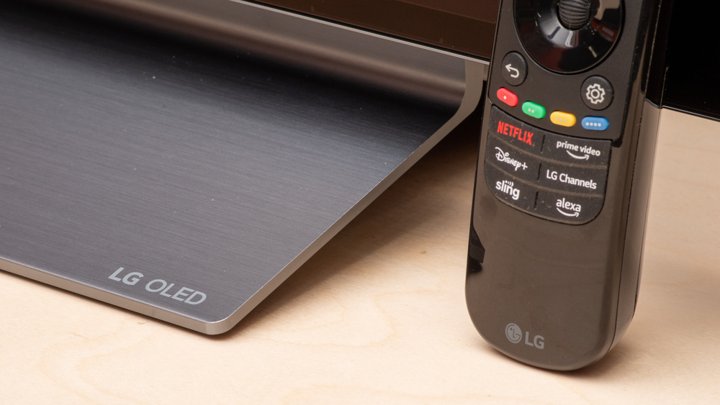Do LED TVs Get Burn-In?
In today’s digital age, televisions are an essential part of our entertainment and communication needs. With the advancement in technology, LED TVs have become a popular choice among consumers due to their slim designs, energy efficiency, and excellent picture quality. However, one common concern that many people have is whether LED TVs can get burn-in.
What is Burn-In?
Burn-in, also known as image retention or ghosting, refers to the phenomenon where an image remains on the screen for a short period after it has been turned off. This can be caused by various factors such as improper calibration, bright static images, and prolonged use of the same channel or menu.
Do LED TVs Get Burn-In?
The answer is yes, but burn-in is relatively rare on modern LED TVs. However, it’s essential to note that some LED TV models are more prone to burn-in than others. The likelihood of getting burn-in depends on several factors such as:
- Type of panel used (IPS, VA, or TN)
- Image retention features and settings
- Prolonged use of static images or menus
- Calibration and maintenance
To minimize the risk of burn-in on your LED TV:
- Avoid leaving the same channel or menu for extended periods.
- Use the TV’s built-in image retention features, such as adjusting the brightness and contrast levels.
- Maintain a regular cleaning schedule to prevent dust buildup.
- Consult your TV’s user manual for specific guidelines on calibration and maintenance.
In conclusion, while burn-in is possible on LED TVs, it’s not a common issue. By following the tips outlined above and being mindful of your TV usage, you can enjoy high-quality entertainment without worrying about image retention. For more information on TV technology and burn-in prevention, visit reputable online resources like CNET or PCMag.
Do LED TVs Get Burn-In?
In today’s digital age, televisions are an essential part of our entertainment and communication needs. With the advancement in technology, LED TVs have become a popular choice among consumers due to their slim designs, energy efficiency, and excellent picture quality. However, one common concern that many people have is whether LED TVs can get burn-in.
What is Burn-In?
Burn-in, also known as image retention or ghosting, refers to the phenomenon where an image remains on the screen for a short period after it has been turned off. This can be caused by various factors such as improper calibration, bright static images, and prolonged use of the same channel or menu.
Do LED TVs Get Burn-In?
The answer is yes, but burn-in is relatively rare on modern LED TVs. However, it’s essential to note that some LED TV models are more prone to burn-in than others. The likelihood of getting burn-in depends on several factors such as:
- Type of panel used (IPS, VA, or TN)
- Image retention features and settings
- Prolonged use of static images or menus
- Calibration and maintenance
To minimize the risk of burn-in on your LED TV:
- Avoid leaving the same channel or menu for extended periods.
- Use the TV’s built-in image retention features, such as adjusting the brightness and contrast levels.
- Maintain a regular cleaning schedule to prevent dust buildup.
- Consult your TV’s user manual for specific guidelines on calibration and maintenance.
In conclusion, while burn-in is possible on LED TVs, it’s not a common issue. By following the tips outlined above and being mindful of your TV usage, you can enjoy high-quality entertainment without worrying about image retention. For more information on TV technology and burn-in prevention, visit reputable online resources like CNET or PCMag.
Overall Opinion: Minimal Risk of Burn-In on LED TVs
In conclusion, while burn-in is possible on LED TVs, it’s not a common issue. With proper calibration, maintenance, and usage habits, the risk of burn-in is significantly minimized. For those looking to purchase an LED TV, rest assured that you can enjoy high-quality entertainment without worrying about image retention. And don’t forget to check for some great deals below!

SAMSUNG 65-Inch Class Crystal UHD 4K DU7200 Series HDR Smart TV w/Object Tracking Sound Lite, PurColor, Motion Xcelerator, Mega Contrast, Q-Symphony (UN65DU7200, 2024 Model)

VIZIO 40-inch Full HD 1080p Smart TV with DTS Virtual: X, Alexa Compatibility, Google Cast Built-in, Bluetooth Headphone Capable, (VFD40M-08 New)

TCL 55-Inch Class S5 UHD 4K LED Smart TV with Fire TV (55S551F, 2024 Model), Dolby Vision, HDR PRO+, Dolby Atmos, Alexa Built-in with Voice Remote, Apple AirPlay 2 Compatibility, Streaming Television
Best Smart Speaker for the Hearing Impaired: Are you or someone you know struggling to hear with traditional speakers? Discover our top picks for smart speakers designed specifically for the hearing impaired. With features like audio amplification and noise reduction, these devices can help improve your listening experience.
Best Smart Speaker for the Hearing Impaired: Do you want to stay connected with loved ones despite hearing challenges? Our expert-curated list of smart speakers for the hearing impaired can help. With advanced audio technology and intuitive interfaces, these devices empower users to communicate more effectively.





